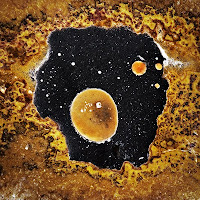
"1. Ineffability - The handiest of the marks by which I classify a state of mind as mystical is negative. The subject of it immediately says that it defies expression, that no adequate report of its contents can be given in words.
2. Noetic Quality - Although so similar to states of feeling, mystical states seem to those who experience them to be also states of knowledge. They are states of insight into depths of truth unplumbed by the discurssive intellect. They are illuminations, revelations, full of significance and importance, all inarticulate though they remain; and as a rule they carry with them a curious sense of authority for aftertime.
3. Transiency - Mystical states cannot be sustained for long.
4. Passivity - Although the oncoming of mystical states may be facilitated by preliminary voluntary operations, as by fixing the attention, or going through certain bodily performances, or in other ways which manuals of mysticism prescribe; yet when the characteristic sort of consciousness once has set in, the mystic feels as if his own will were in abeyance, and indeed sometimes as if he were grasped and held by a superior power."
-William James
"1. True mysticism is active and practical, not passive and theoretical. It is an organic life-process, a something which the whole self does; not something as to which its intellect holds an opinion.
2. Its aims are wholly transcendental and spiritual. It is in no way concerned with adding to, exploring, re-arranging, or improving anything in the visible universe. The mystic brushes aside that universe, even in its supernormal manifestations. Though he does not, as his enemies declare, neglect his duty to the many, his heart is always set upon the changeless One.
3. This One is for the mystic, not merely the Reality of all that is, but also a living and personal Object of Love; never an object of exploration. It draws his whole being homeward, but always under the guidance of the heart.
4. Living union with this One—which is the term of his adventure—is a definite state or form of enhanced life. It is obtained neither from an intellectual realization of its delights, nor from the most acute emotional longings. Though these must be present they are not enough. It is arrived at by an arduous psychological and spiritual process—the so-called Mystic Way—entailing the complete remaking of character and the liberation of a new, or rather latent, form of consciousness; which imposes on the self the condition which is sometimes inaccurately called “ecstasy,” but is better named the Unitive State."
-Evelyn Underhill






